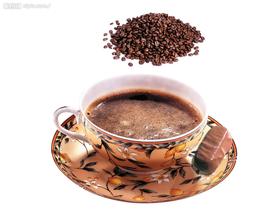There are several seed treatment methods in coffee berries.
There are several seed treatment methods in coffee berries.
Or using an automated harvester, it is impossible to distinguish ripe berries from green berries.
The ripe coffee berries look like cherries and are bright red with sweet flesh and contain a pair of seeds, namely coffee beans (Coffee Beans). Coffee varieties can be divided into small-grain, medium-grain and large-grain species, the former contains low caffeine content and strong flavor, while the latter two have high caffeine content but poor flavor. Coffee sold in the world is generally made of small and medium seeds in different proportions, usually 70% of medium seeds, mainly caffeine, and 30% of small seeds, mainly for their aroma. Each coffee variety generally has a few to a dozen variants. Coffee is more resistant to shade and cold, but not resistant to light, drought and disease. Coffee contains nine kinds of nutrients, such as caffeine, protein, crude fat, crude fiber and sucrose. As a beverage, coffee is not only mellow and delicious, slightly bitter and sweet, but also can excite nerves and dispel fatigue. In medicine, caffeine can be used as an anesthetic, stimulant, diuretic and cardiotonic, as well as to help digestion and promote metabolism. The pulp of coffee is rich in sugar and can be used to make sugar and alcohol. Coffee flowers contain essential oils, which can extract high-grade spices.
When the coffee berries are ripe, they are usually harvested by manual picking. In some places, only the fully ripe berries are picked, while others are all picked from a single branch. The former is called "handpicked" and the latter is called "strip-picking". Because the ripening time of coffee berries is not consistent, so the harvest is likely to be divided into several times, the duration will be very long, so harvesting is also the largest part of manpower investment.
The harvested coffee berries need further treatment, usually in two ways.
One is water washing, which is popular in Central America and parts of Africa; freshly harvested coffee berries separate the peel from the beans manually or mechanically, and then soak in water for 2 to 3 days. In this way, the pulp and sticky matter attached to the coffee beans will be removed. Then comes the cleaning and drying process, which can be done in the natural sun or by machine.
One is: solarization, which is more economical in Brazil and most African countries. After removing twigs and other debris, the coffee berries are spread out in the sun for 2 to 3 weeks, turning repeatedly to make the berries drier until the berries fall off the coffee beans.
When the water content of the coffee beans is reduced to about 13%, the coffee beans will be bagged and cooked in the warehouse for 1 to 3 months.

Important Notice :
前街咖啡 FrontStreet Coffee has moved to new addredd:
FrontStreet Coffee Address: 315,Donghua East Road,GuangZhou
Tel:020 38364473
- Prev

What kind of coffee pot is good for sour coffee?
What kind of coffee pot is used to make sour coffee? What kind of good texture is the texture of coffee in the mouth, which is directly proportional to the amount of colloidal suspension in the coffee. Because the whole mouth will feel the texture, we use "rich" to describe thick coffee, otherwise we use "single."
- Next

The skills of Coffee Breaking-the Diagram of Coffee Breaking skills
Coffee brewing skills-Coffee milking skills diagram (1) place the steam pipe at the center of the steel cup, 45 degrees to the upper right, near the edge of the steel cup, with a depth of about 1 centimeter. (2) turn on the steam pipe, move the steel cup down slowly, and roll the milk up and down and slowly let the volume expand. (3) when the foam expands to eight minutes full, put the steam pipe
Related
- What brand of black coffee is the most authentic and delicious? what are the characteristics of the flavor of the authentic Rose Summer Black Coffee?
- Introduction to the principle and characteristics of the correct use of mocha pot A detailed course of mocha pot brewing coffee is described in five steps.
- Which is better, decaf or regular coffee? how is decaf made?
- How much is a bag of four cat coffee?
- How about four Cat Coffee or Nestle Coffee? why is it a cheap scam?
- Which is better, Yunnan four Cats Coffee or Nestle Coffee? How about cat coffee? is it a fake scam? why is it so cheap?
- How about Cat Coffee? what grade is a hoax? which instant coffee tastes better, four Cat Coffee, Nestle Coffee or G7 coffee?
- Process flow chart of coffee making-Starbucks coffee making process what coffee tastes good at Starbucks
- The top ten best coffee beans in the world Rose summer coffee or Tanzanian coffee tastes good
- Yunnan four cat coffee is good to drink?_four cat coffee is a big brand? four cat blue mountain coffee is fake?

